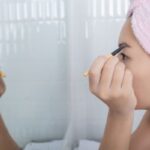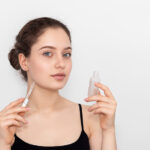Acne is a common skin condition that can affect anyone, but finding the right treatment can make a significant difference. Here’s a detailed look at the top 10 ways to effectively treat acne:
1. Topical Retinoids
Topical retinoids, such as tretinoin, adapalene, and tazarotene, are derived from vitamin A and help to unclog pores by promoting cell turnover. They reduce inflammation and prevent new acne from forming. Retinoids are often recommended by dermatologists for their effectiveness in treating acne and improving skin texture.
2. Benzoyl Peroxide
Benzoyl peroxide is a powerful antibacterial agent that helps to kill the bacteria responsible for acne, Propionibacterium acnes.In addition, it aids in pore cleaning and irritation reduction. Available in various strengths, it can be found in over-the-counter treatments or prescribed in higher concentrations.
3. Salicylic Acid
Salicylic acid is a beta-hydroxy acid (BHA) that exfoliates the skin, helping to remove dead skin cells that can clog pores. It also has anti-inflammatory properties and can penetrate deep into the pores to clear out excess oil and debris. Salicylic acid is often used in cleansers, toners, and spot treatments.
4. Alpha Hydroxy Acids (AHAs)
AHAs, such as glycolic acid and lactic acid, help to exfoliate the skin’s surface, promoting the shedding of dead skin cells and preventing clogged pores. They also improve skin texture and tone. AHAs are typically found in chemical peels, masks, and serums.
5. Antibiotics
Topical or oral antibiotics can help to reduce acne by targeting and killing the bacteria that contribute to its development. Common antibiotics include clindamycin and doxycycline. However, long-term use is generally avoided due to the risk of antibiotic resistance.
6. Hormonal Treatments
For individuals whose acne is influenced by hormonal changes, hormonal treatments can be effective. Birth control pills and anti-androgens, such as spironolactone, can help regulate hormones and reduce acne. These treatments are particularly useful for women with persistent acne.
7. Light and Laser Therapy
Light and laser treatments minimize inflammation and target the germs that cause acne. Blue light therapy, for instance, kills Propionibacterium acnes on the skin’s surface. Laser treatments can also improve acne scars and overall skin texture. These treatments are typically performed by dermatologists.
8. Chemical Peels
Chemical peels involve applying a chemical solution to the skin, which causes the top layer to peel off and reveal new, less acne-prone skin. Peels containing salicylic acid or glycolic acid are common choices. They can help reduce acne and improve skin appearance.
9. Proper Skincare Routine
Maintaining a consistent skincare routine is crucial for managing acne. This includes:
- Cleansing: Use a gentle, non-comedogenic cleanser twice daily to remove excess oil and dirt.
- Moisturizing: Choose an oil-free, non-comedogenic moisturizer to keep the skin hydrated without clogging pores.
- Sun Protection: Use a broad-spectrum sunscreen with SPF 30 or higher to protect the skin and prevent acne scars from darkening.
10. Diet and Lifestyle Changes
Diet and lifestyle factors can influence acne. Consider the following changes:
- Diet:Adopt a well-balanced meal full of whole grains, fruits, vegetables, lean meats, and other nutrients. Some studies suggest that reducing dairy and high-glycemic-index foods may help.
- Hydration:To stay hydrated and remove toxins from the skin, drink a lot of water.
- Stress Management: Practice stress-reducing techniques, such as exercise, meditation, or yoga, as stress can exacerbate acne.
While these treatments can be effective, it’s important to consult with a dermatologist to develop a personalized plan based on your specific skin type and acne severity. They can help guide you in choosing the most appropriate treatments and monitor your progress.







